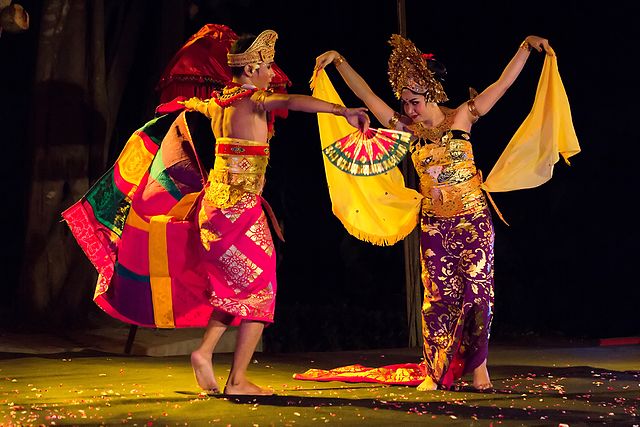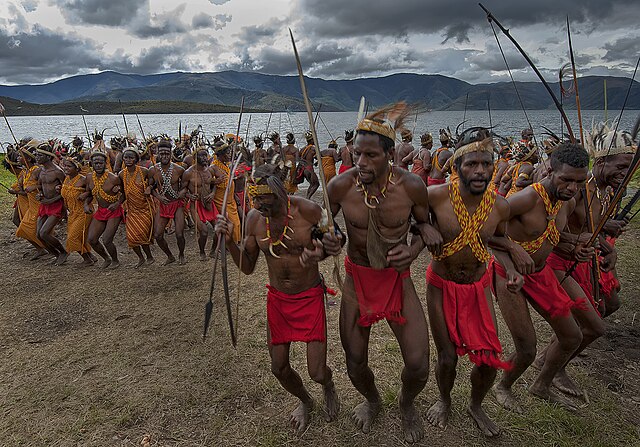As it is a country with many different tribes and ethnic groups, the music of Indonesia itself is also very diverse, coming in hundreds of different forms and styles. Every region has its own culture and art, and as a result traditional music from area to area also uniquely differs from one another. For example, each traditional music are often accompanied by their very own dance and theatre. Contemporary music scene have also been heavily shaped by various foreign influences, such as America, Britain, Japan, Korea, and India.
Musicians performing musical ensemble, The 8th century bas-relief of Borobudur Temple, Central Java, Indonesia
Javanese Gamelan in Asian Civilisations Museum, Singapore
The Sundanese Degung gamelan performance in Museo Nacional de las Culturas Mexico, Indra Swara group.
Gamelan Sekaten Kanjeng Kiai Guntur Madu (One of Some Javanese Sacred Gamelan) is usually beaten every day for a week during the Sekaten celebration at the Keraton Yogyakarta.
Dance in Indonesia reflects the country's diversity of ethnicities and cultures. There are more than 1,300 ethnic groups in Indonesia. Austronesian roots and Melanesian tribal forms are visible, and influences ranging from neighboring Asian and even western styles through colonization. Each ethnic group has its own dances: there are more than 3,000 original dance forms in Indonesia. The old traditions of dance and drama are being preserved in the numerous dance schools which flourish not only in the courts but also in the modern, government-run or supervised art academies.
Oleg Balinese dance performed by a pair of dancers
Papuan tumbu tanah dance
Kabasaran dance, Minahasa North Sulawesi.
Lakshmana, Rama and Shinta in Ramayana ballet at Prambanan, Java.








